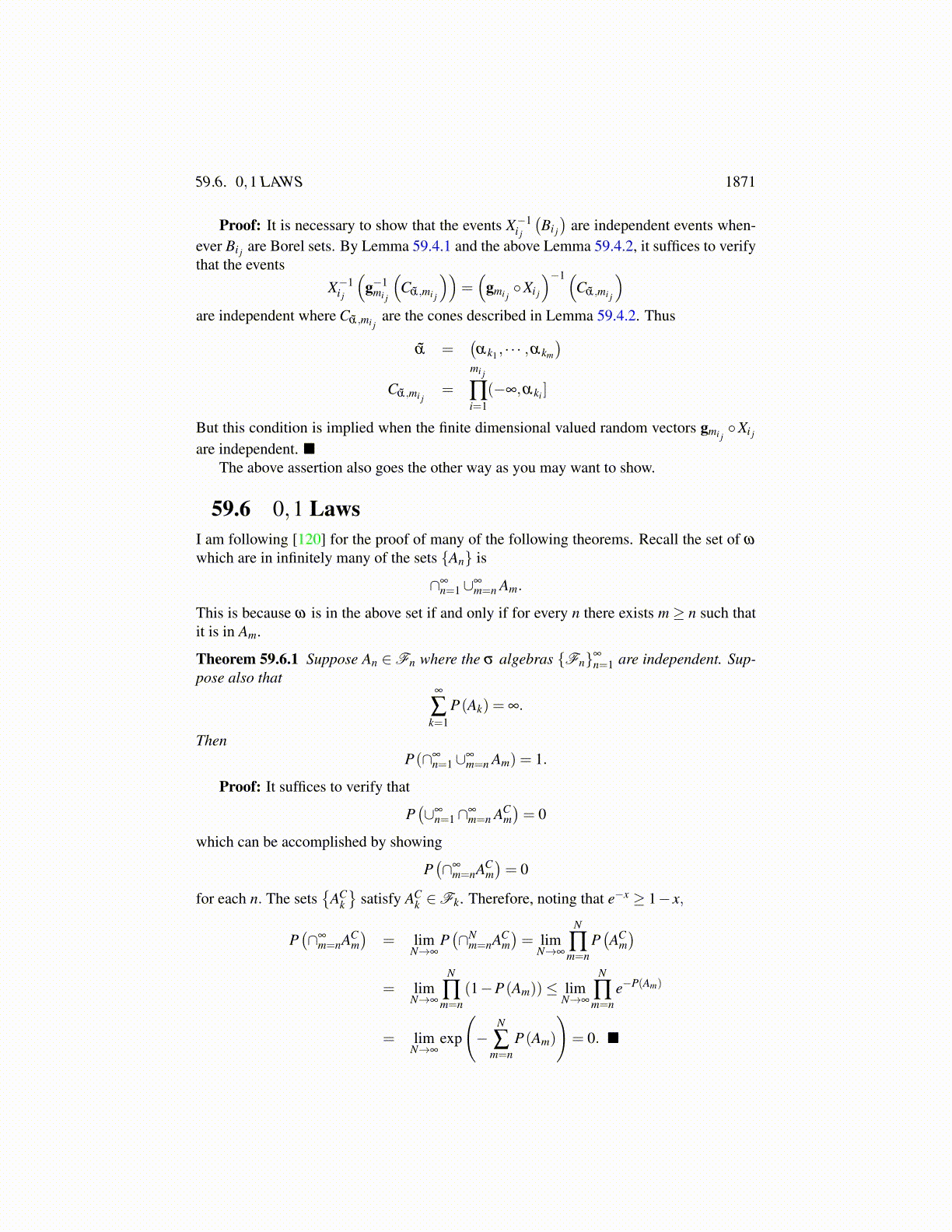
59.4. BANACH SPACE VALUED RANDOM VARIABLES 1871
be any dense subset of B′. Then
{x ∈ E : ||x−a|| ≤ r}
=
{x ∈ E : sup
f∈D′| f (x−a)| ≤ r
}
=
{x ∈ E : sup
f∈D′| f (x)− f (a)| ≤ r
}= ∩ f∈D′ {x ∈ E : f (a)− r ≤ f (x)≤ f (a)+ r}= ∩ f∈D′ {x ∈ E : f (x)≤ f (a)+ r and (− f )(x)≤ r− f (a)}
which equals a countable intersection of sets of the given π system. Therefore, every closedball is contained in σ (K ). It follows easily that every open ball is also contained in σ (K )because
B(a,r) = ∪∞n=1B
(a,r− 1
n
).
Since the Banach space is separable, it is completely separable and so every open set is thecountable union of balls. This shows the open sets are in σ (K ) and so σ (K ) ⊇B (E) .However, all the sets in the π system are closed hence Borel because they are inverse imagesof closed sets. Therefore, σ (K )⊆B (E) and so σ (K ) = B (E).
As mentioned above, we can replace D′ in the above with M, any dense subset of E ′.
Observation 59.4.3 Denote by Cα,n the set {β ∈ Rn : β i ≤ α i} . Also denote by gn an ele-ment of Mn with the understanding that gn : E→ Rn according to the rule
gn (x)≡ (g1 (x) , · · · ,gn (x)) .
Then the sets in the above lemma can be written as g−1n (Cα,n). In other words, sets of the
form g−1n (Cα,n) form a π system for B (E).
Next suppose you have some random variables having values in a separable Banachspace, E, {Xi}i∈I . How can you tell if they are independent? To show they are independent,you need to verify that
P(∩n
k=1X−1ik
(Fik
))=
n
∏k=1
P(
X−1ik
(Fik
))whenever the Fik are Borel sets in E. It is desirable to find a way to do this easily.
Lemma 59.4.4 Let K be a π system of sets of E, a separable real Banach space and let(Ω,F ,P) be a probability space and X : Ω→ E be a random variable. Then
X−1 (σ (K )) = σ(X−1 (K )
)